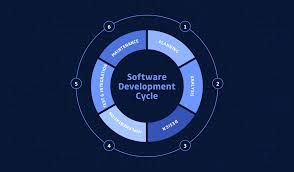The Importance of Secure Software Development Lifecycle (SDLC)
Secure Software Development Lifecycle (SDLC) is a crucial process that ensures the development of software applications with security in mind from the very beginning. By integrating security practices into every phase of the software development process, organizations can mitigate potential risks and vulnerabilities, ultimately leading to more secure and reliable software products.
One of the key benefits of implementing a Secure SDLC is the early identification and mitigation of security issues. By conducting security assessments, code reviews, and penetration testing throughout the development lifecycle, developers can address vulnerabilities before they become major security threats. This proactive approach not only reduces the likelihood of security breaches but also saves time and resources in the long run.
Furthermore, Secure SDLC promotes a culture of security awareness within development teams. By incorporating security best practices into their daily workflows, developers become more vigilant about potential security risks and take proactive measures to address them. This shift in mindset helps create a more secure environment for software development and fosters a culture of responsibility for security among team members.
Overall, Secure SDLC plays a vital role in ensuring that software applications are developed with security as a top priority. By following secure coding practices, conducting regular security assessments, and fostering a culture of security awareness, organizations can build trust with their users and protect sensitive data from cyber threats.
Understanding Secure SDLC: Key Phases, Practices, and Implementation Strategies
- What phase of SDLC is security?
- What is the proper way to secure your SDLC?
- What is secure coding practices in SDLC?
- What are the 5 phases of the security life cycle?
What phase of SDLC is security?
In the Software Development Lifecycle (SDLC), security is not confined to a single phase but is integrated throughout the entire process. Security should be considered and implemented in every phase of the SDLC, from planning and requirements gathering to design, development, testing, deployment, and maintenance. By incorporating security practices at each stage of the SDLC, organizations can proactively identify and address potential security vulnerabilities, ultimately leading to more secure software products.
What is the proper way to secure your SDLC?
Securing your Software Development Lifecycle (SDLC) involves implementing a comprehensive approach to integrating security practices at every stage of the development process. To properly secure your SDLC, it is essential to start by conducting a thorough risk assessment to identify potential vulnerabilities and threats. Implementing security controls such as secure coding standards, regular security testing, code reviews, and vulnerability assessments throughout the development lifecycle is crucial. Additionally, providing security training and awareness programs for developers and stakeholders can help foster a culture of security within the organization. By adopting a proactive and holistic approach to security in the SDLC, organizations can effectively mitigate risks and build robust and secure software products.
What is secure coding practices in SDLC?
Secure coding practices in Software Development Lifecycle (SDLC) refer to the set of guidelines and best practices that developers follow to write code that is resistant to security vulnerabilities and threats. These practices include but are not limited to input validation, output encoding, proper error handling, secure authentication mechanisms, data encryption, and access control. By adhering to secure coding practices throughout the development process, developers can reduce the risk of introducing security flaws into their code and build more robust and secure software applications.
What are the 5 phases of the security life cycle?
The five phases of the security life cycle, also known as the Secure Software Development Lifecycle (SDLC), are crucial steps in ensuring that software applications are developed with security in mind. These phases include planning, designing, implementing, testing, and maintaining. During the planning phase, security requirements and objectives are defined. In the designing phase, security controls and features are incorporated into the software architecture. The implementing phase involves coding securely based on best practices. Testing is conducted to identify and address any security vulnerabilities or weaknesses. Finally, the maintaining phase ensures that ongoing security updates and patches are applied to keep the software secure throughout its lifecycle. By following these five phases diligently, organizations can develop robust and secure software applications that protect against potential cyber threats.




